2026 Honda HR-V Review
Hybrid power would dramatically improve the practical and affordable 2026 HR-V.
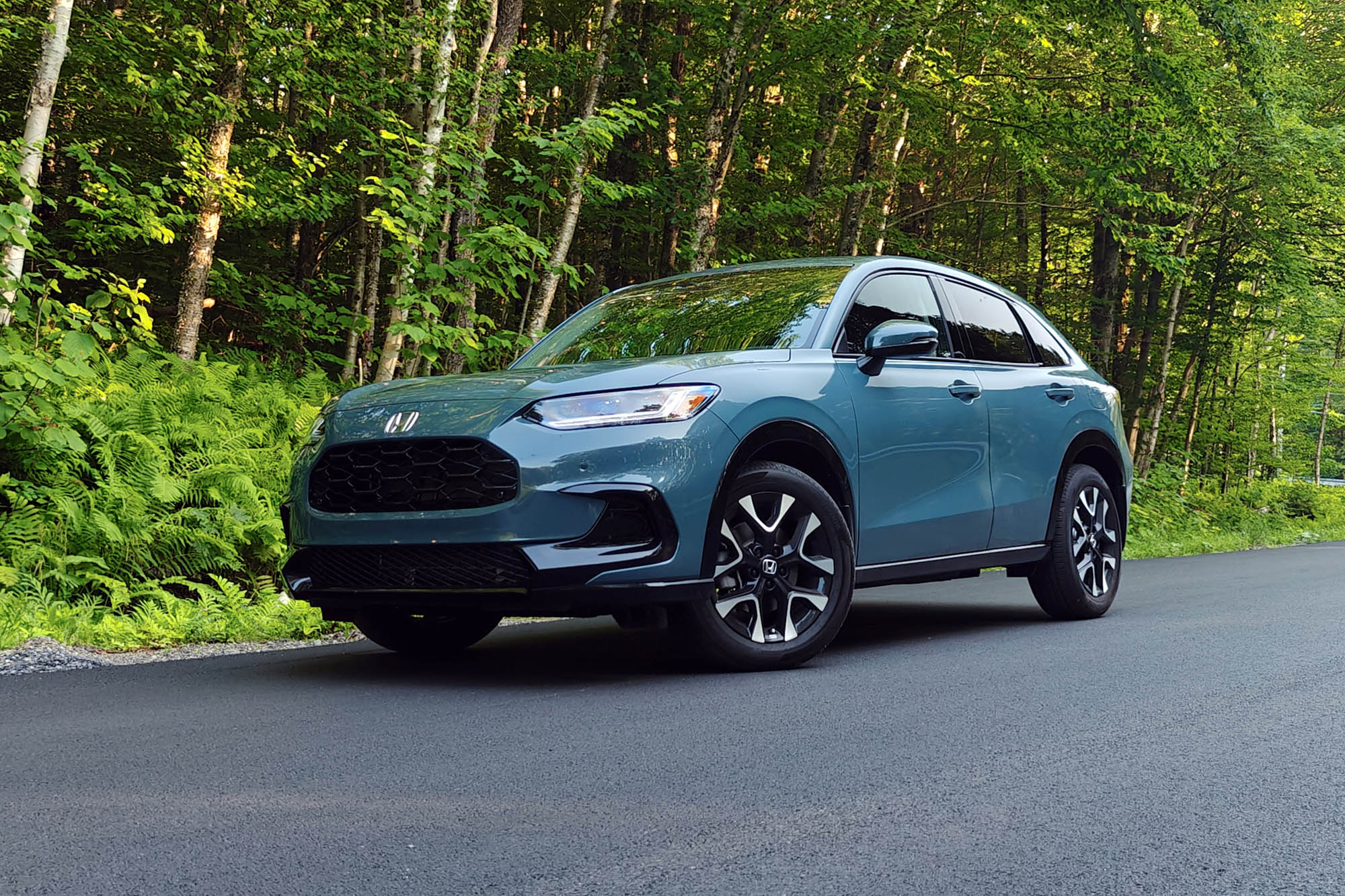 Benjamin Hunting
Benjamin Hunting
There's no shortage of SUVs in Honda showrooms that are both competitive and competitively priced. For example, the popular Honda CR-V draws in hundreds of thousands of buyers annually. You might assume the smaller but less expensive 2026 Honda HR-V matches its larger sibling's broad appeal, but it currently sells at a rate less than half that of the CR-V. Unlike the CR-V, the HR-V hasn't become a class-leading vehicle.
Three years after its most recent redesign, the 2026 HR-V gets several updates. The changes, however, aren't significant. The crossover gets new wheel designs, fresh shades of paint, and, for lower-priced models, tinted glass (base trim) and black badges (midlevel trim). Upgraded tech arrives in the form of a standard 9.0-inch touchscreen infotainment system with wireless Apple CarPlay and Android Auto functionality, but that was already available on last year's range-topping EX-L edition.
There's nothing unwelcome about these updates, but they don't address the Honda HR-V's least-appealing feature: its drivetrain. In a world where small and efficient turbocharged engines duke it out with thrifty hybrid setups, the HR-V offers neither hybrid nor turbo. From my perspective, the HR-V's lackluster and exclusively internal-combustion powertrain accounts for the success gap between not only the HR-V and its CR-V sibling, but also the HR-V and its rivals.
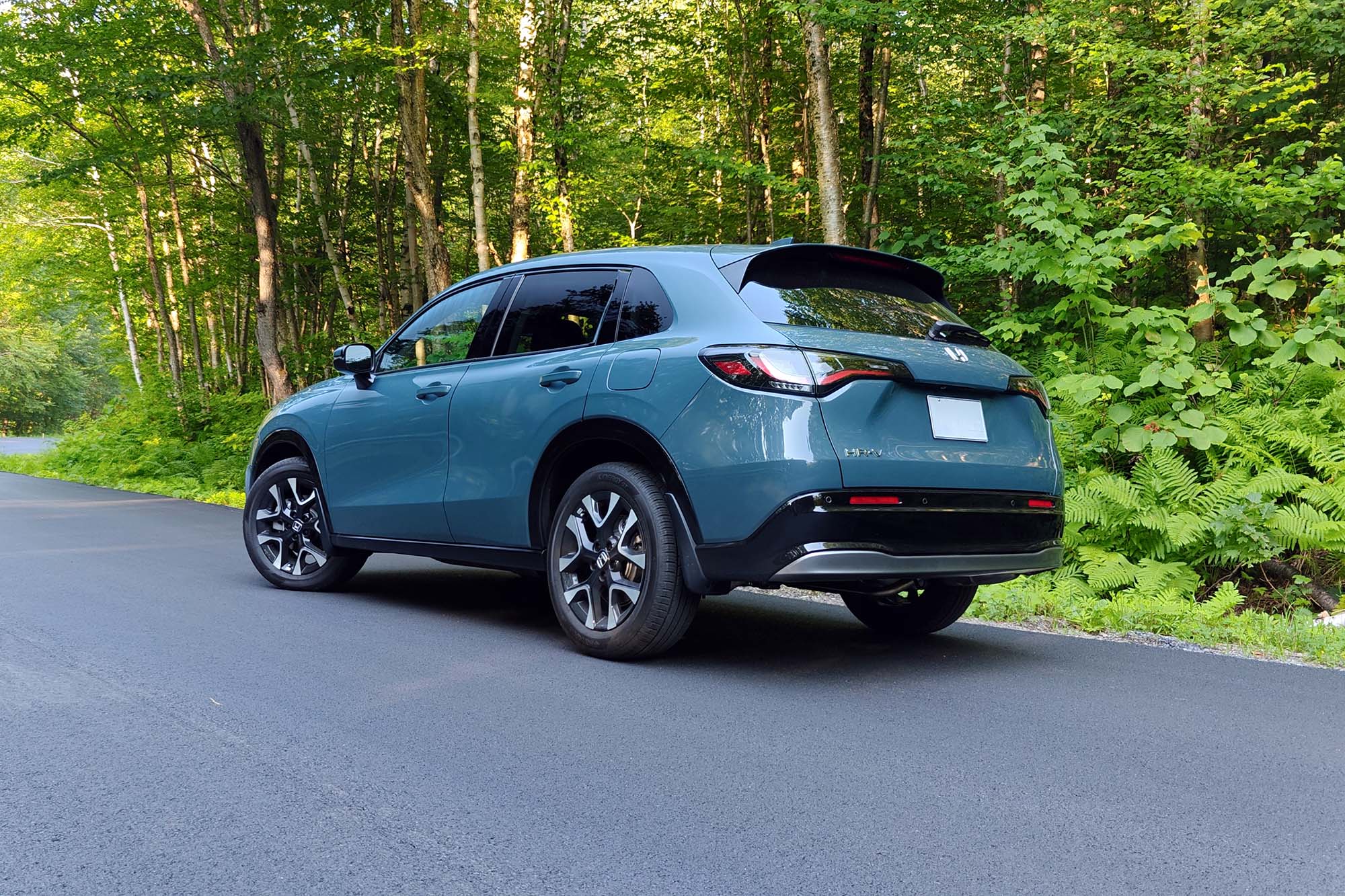 Benjamin Hunting
Benjamin Hunting
About the 2026 Honda HR-V Review Vehicle
Honda offers the 2026 HR-V in LX, Sport, and EX-L trim levels equipped with front-wheel drive or all-wheel drive (AWD). Prices range from the high $20,000s to the low $30,000s, including the destination charge to ship the SUV from its Celaya, Guanajuato, assembly plant in Mexico to your local dealership.
For this HR-V review, I drove the EX-L AWD model in Montreal, Quebec, and in the countryside of the Eastern Townships. Taking into account its optional Nordic Forest Pearl paint and its Protection package accessory set (cargo tray, mud flaps, and wheel locks), the test vehicle had a manufacturer's suggested retail price of $32,300, including the $1,450 destination charge. Honda provided the vehicle for this HR-V review.
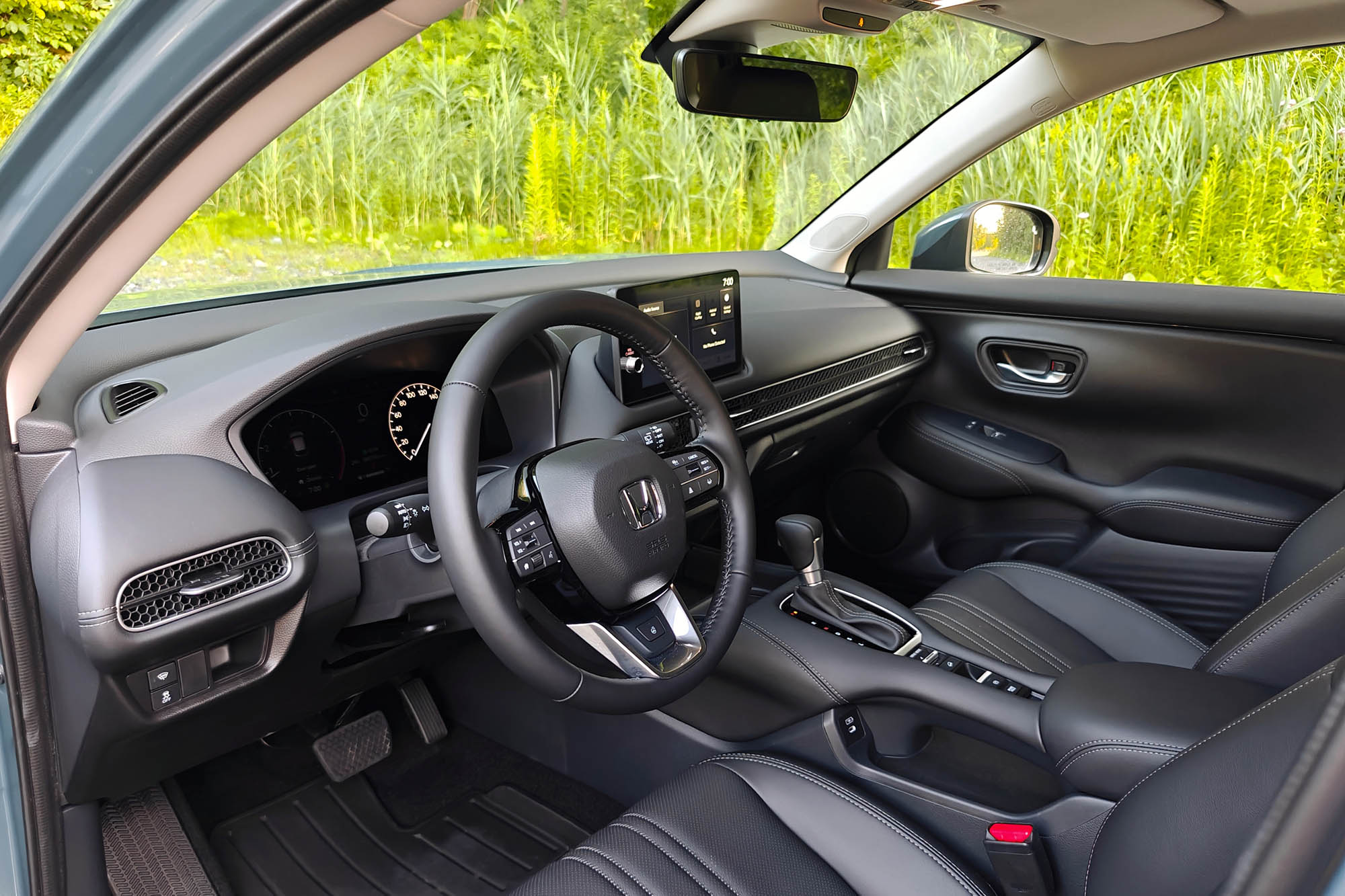 Benjamin Hunting
Benjamin Hunting
The HR-V's Styling Is Basic, but Its Cabin Is Comfy
Aside from new wheels and a couple of paint colors, the 2026 Honda HR-V looks the same as it did last year. The styling, aside from a front end that reminds me of a catfish, is inoffensive and pleasantly curvy.
Likewise, the interior details see minimal changes from the previous year. My EX-L test vehicle benefited from footwell lighting and bright silver steering wheel spokes. Aside from those enhancements and the metallic accents surrounding the dashboard vents and the shifter, the rest of its presentation was resolutely monochromatic, a mix of black leather upholstery and plastic paneling.
Simple knobs activate the climate system, an approach more automakers should follow. However, I didn't appreciate how choosing the automatic climate setting forced the air-conditioning system into recirculation mode. The steering wheel buttons were adequate for navigating the limited menus displayed on the instrumentation panel and interacting with the infotainment system, and the console-mounted shifter was a welcome blast from the past that took the guesswork out of gear selection.
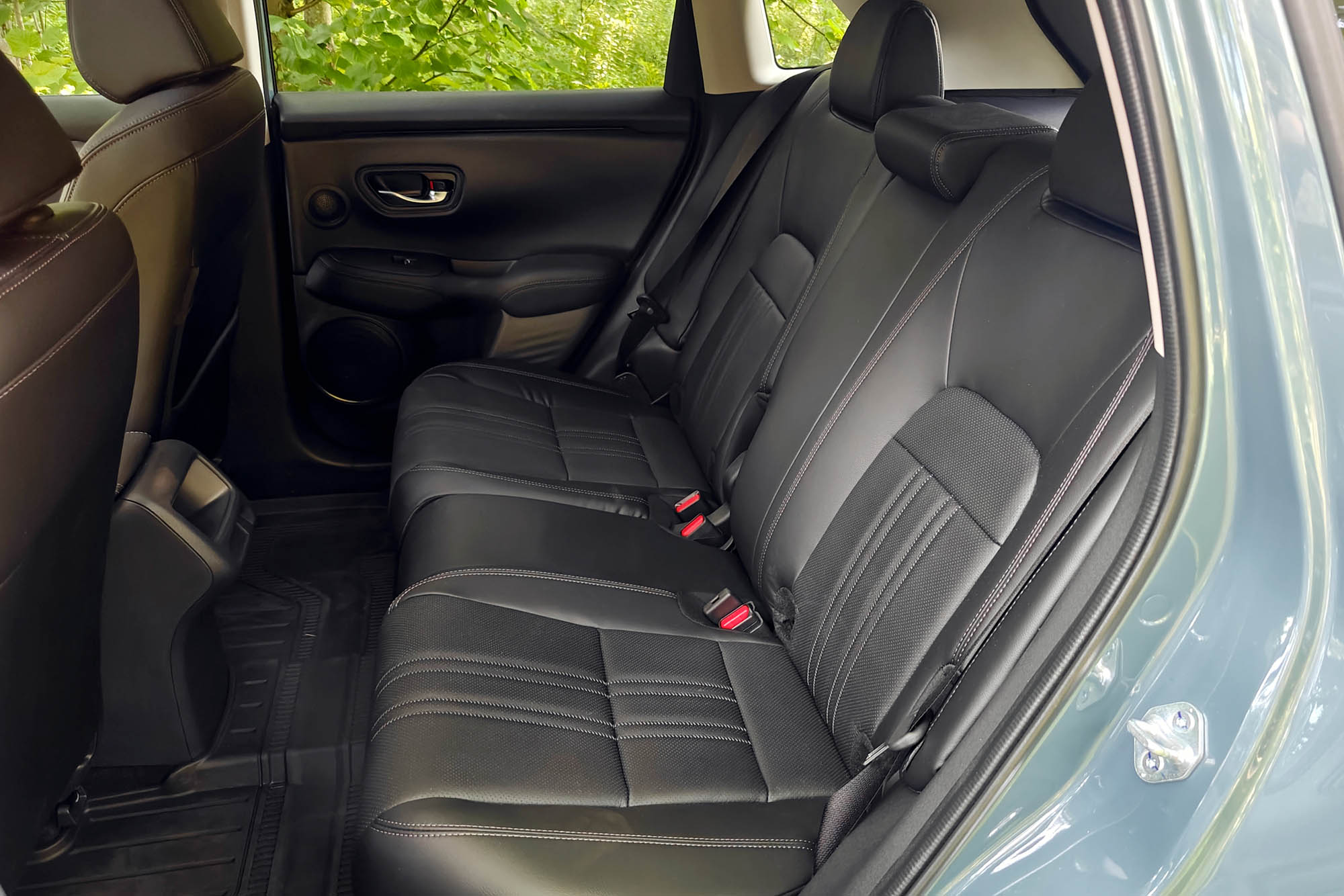 Benjamin Hunting
Benjamin Hunting
Despite its small size, the HR-V is roomy for its class, especially in the back. There was generous space available to stretch out, even with the front seats positioned to accommodate taller people. The EX-L's power moonroof didn't negatively impact headroom, either.
While those riding up front have access to a handy storage cutout underneath the center console, those in the back have only a small slot at the rear of that same console. That's not the only deprivation for second-row occupants, as there's no fold-down center armrest, charging port, or even a cupholder. You'll need a long cable to access one of the two ports built into the dashboard.
The HR-V's fold-flat back seat expands the cargo space from 24.4 cubic-feet to 55.1 cu-ft. The Protection package installed on my test model also included plastic covers for the seatbacks and cargo floor, a welcome addition when hauling gear that's wet, muddy, or pointy enough to carve up the seat fabric.
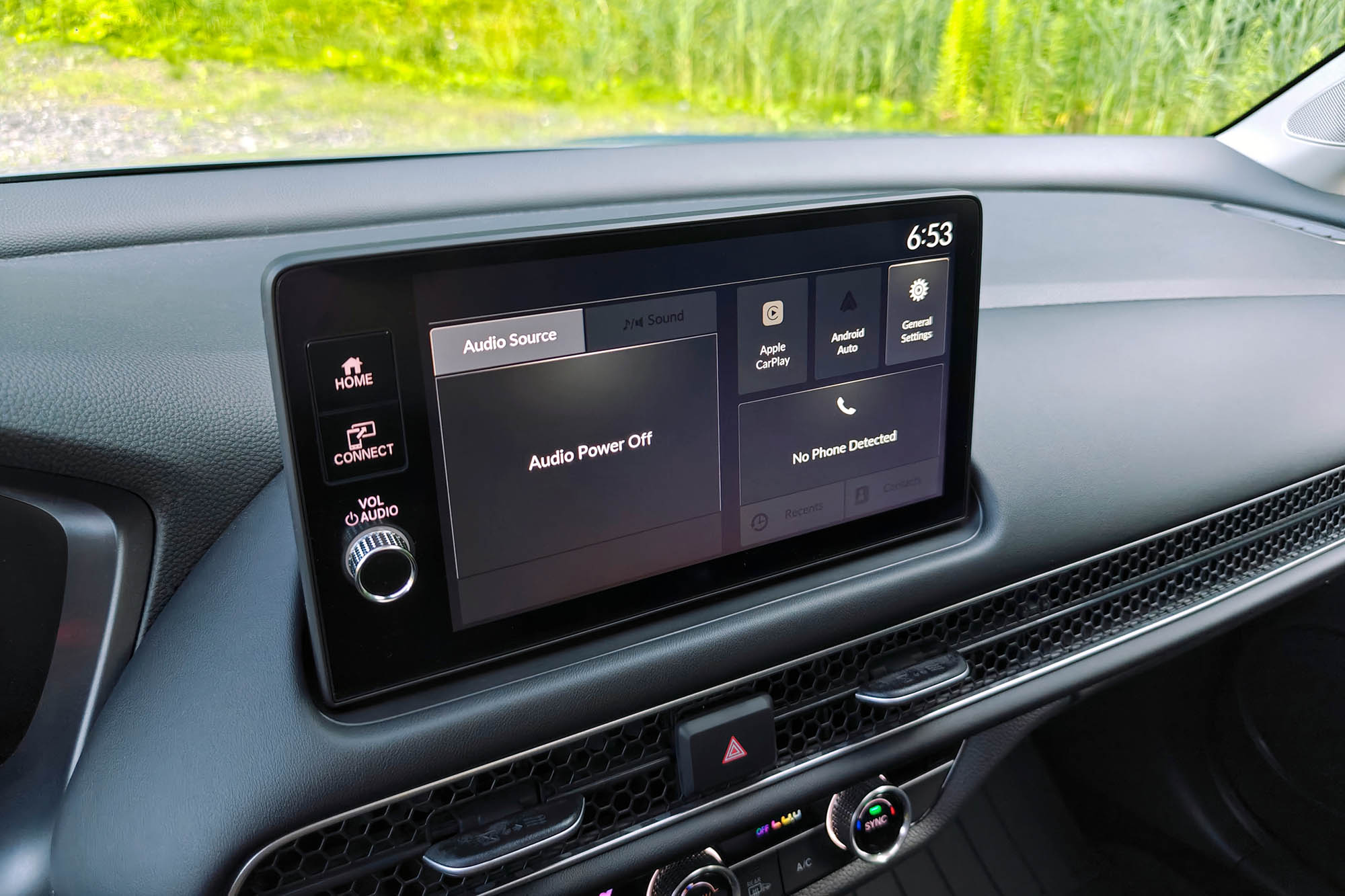 Benjamin Hunting
Benjamin Hunting
Don't Expect Much From the HR-V's Infotainment System
It's perhaps no surprise that the Honda HR-V's infotainment system is as basic as the rest of the SUV. Featuring a 9.0-inch color touchscreen plopped on top of the dashboard, it offers little more than audio controls, media options (radio, Bluetooth), and wireless smartphone mirroring (Apple CarPlay and Android Auto). Voice commands are available either natively for taking phone calls or through Siri and Google when mirroring. Both worked as expected.
Honda is presumably relying on owners to take advantage of their phones to handle navigation, entertainment, and communications. I don't have a problem with that approach, but the HR-V's screen is small and its presentation unimpressive, even compared with older designs like what's in the Subaru Crosstrek. It also lacks useful native apps, although I find most of those features to be superfluous to the ownership experience.
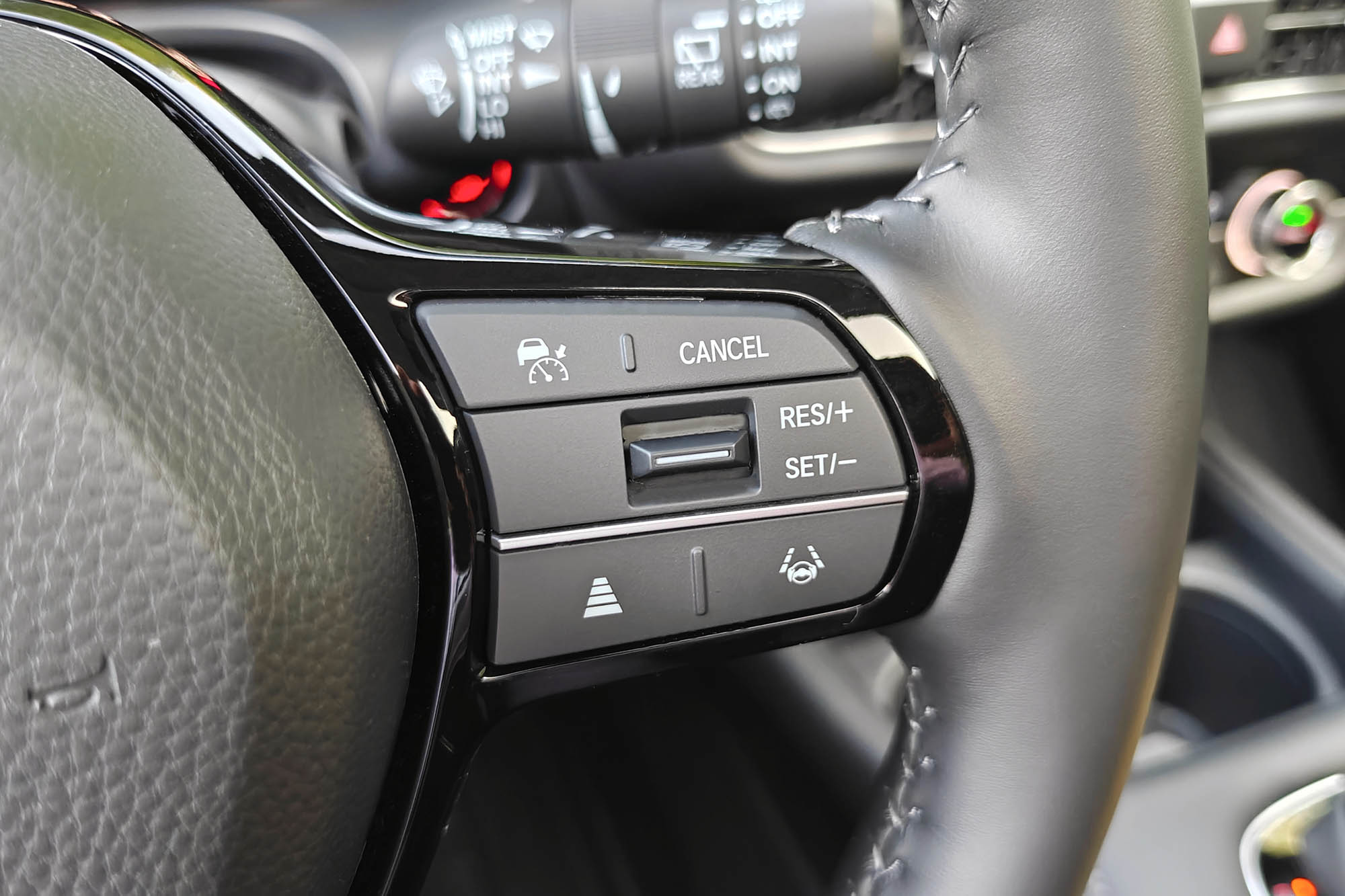 Benjamin Hunting
Benjamin Hunting
Every 2026 HR-V includes the Honda Sensing suite of advanced driver-assistance features, a comprehensive group of technologies designed to help keep you safe on the road.
While the adaptive cruise control and lane-centering assistance worked well during highway driving, the latter had trouble with the sharper curves found on two-lane roads. More than once, the SUV broke free from the lane I was in and drifted onto the shoulder with no meaningful intervention from the steering system. Honda describes the system as only able to apply "mild steering torque," so I consider it a highway-only affair.
I also encountered inconsistent behavior from something Honda calls Road Departure Mitigation, which notifies and corrects if the HR-V strays onto the shoulder. I found it activated only one out of every three times the vehicle left its lane without a turn signal active.
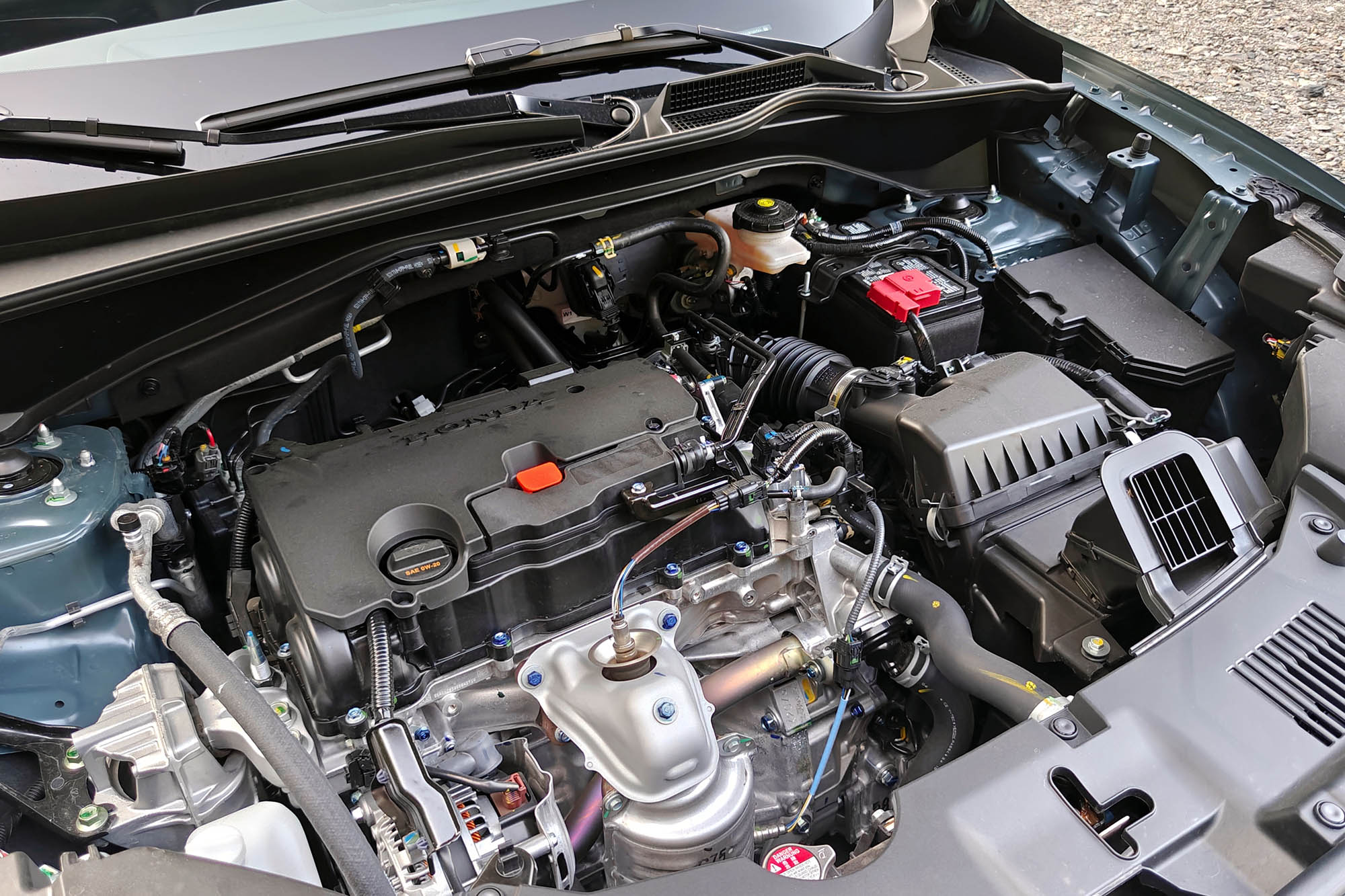 Benjamin Hunting
Benjamin Hunting
The HR-V Needs a Better Transmission
All HR-V trim levels feature the same 2.0-liter four-cylinder engine. Rated at 158 horsepower and 138 pound-feet of torque, it's paired with a continuously variable transmission (CVT) powering the front wheels. An AWD system is available as an option, and my test vehicle had it.
The CVT's tuning could be better. On a flat surface, at a constant speed, everything is fine. Step outside that narrow operating envelope, though, and the transmission yo-yos the engine revs up and down as it tries to figure out how to generate enough power to climb a hill. In particular, the effect is pronounced between 25 and 35 mph, leading to noisy surging from under the hood and uneven acceleration.
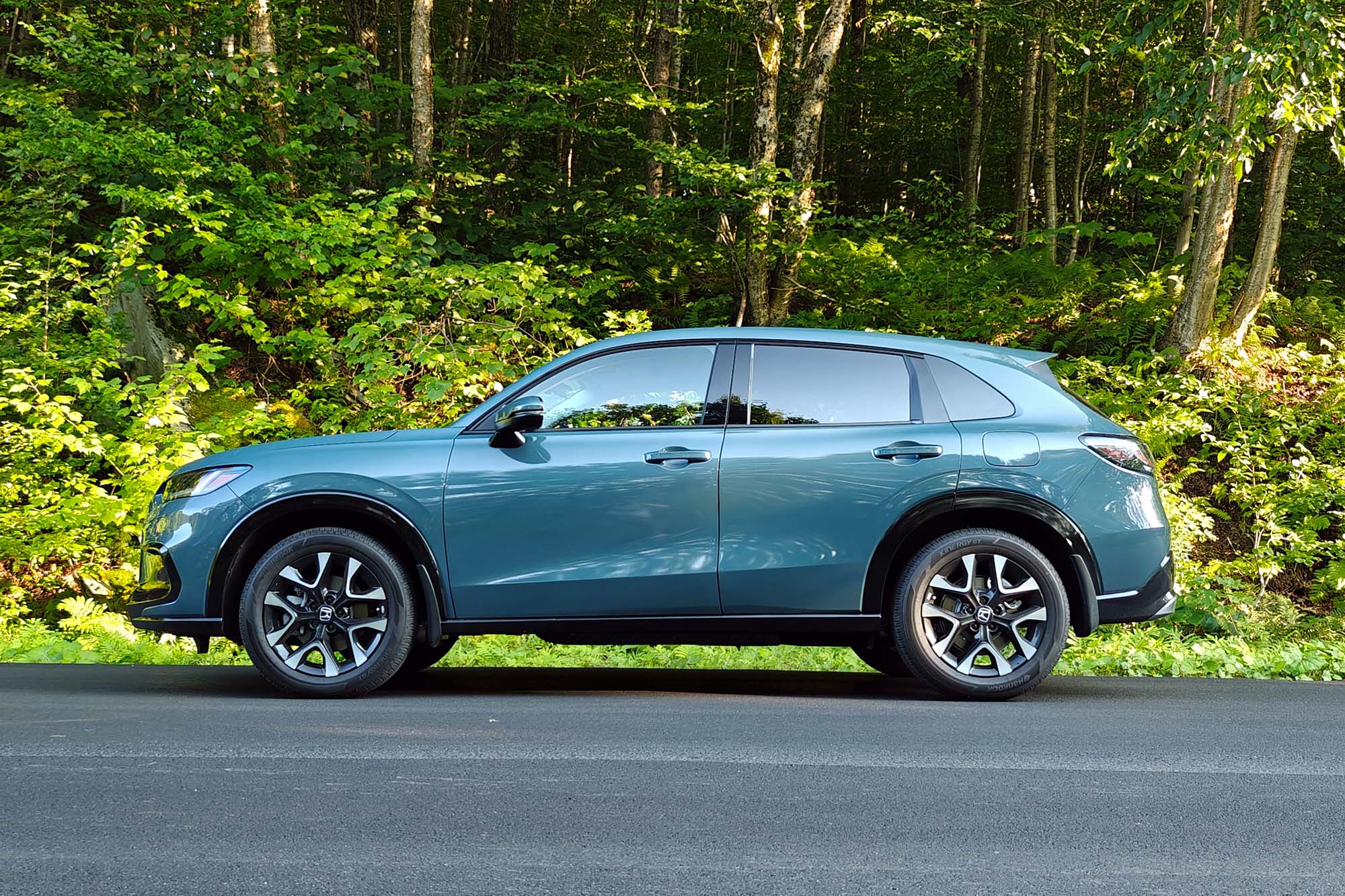 Benjamin Hunting
Benjamin Hunting
My test vehicle averaged 30 mpg in combined city and highway driving, which is better than Honda's 27-mpg estimate for all-wheel drive models. It's also on par with most other subcompact crossovers, with the caveat that nearly every HR-V alternative I have tested feels quicker and more pleasant to drive than the Honda. To illustrate, this SUV had me counting to 10 before it could reach a safe highway merging speed.
Honda offers a terrific hybrid drivetrain in similarly sized vehicles such as the Civic hatchback and the CR-V. As currently equipped, it is difficult to recommend the HR-V over either of those models, given the grumpiness of its engine and transmission. A thrifty hybrid setup would go a long way toward making the HR-V a true stand-out among subcompact SUVs.
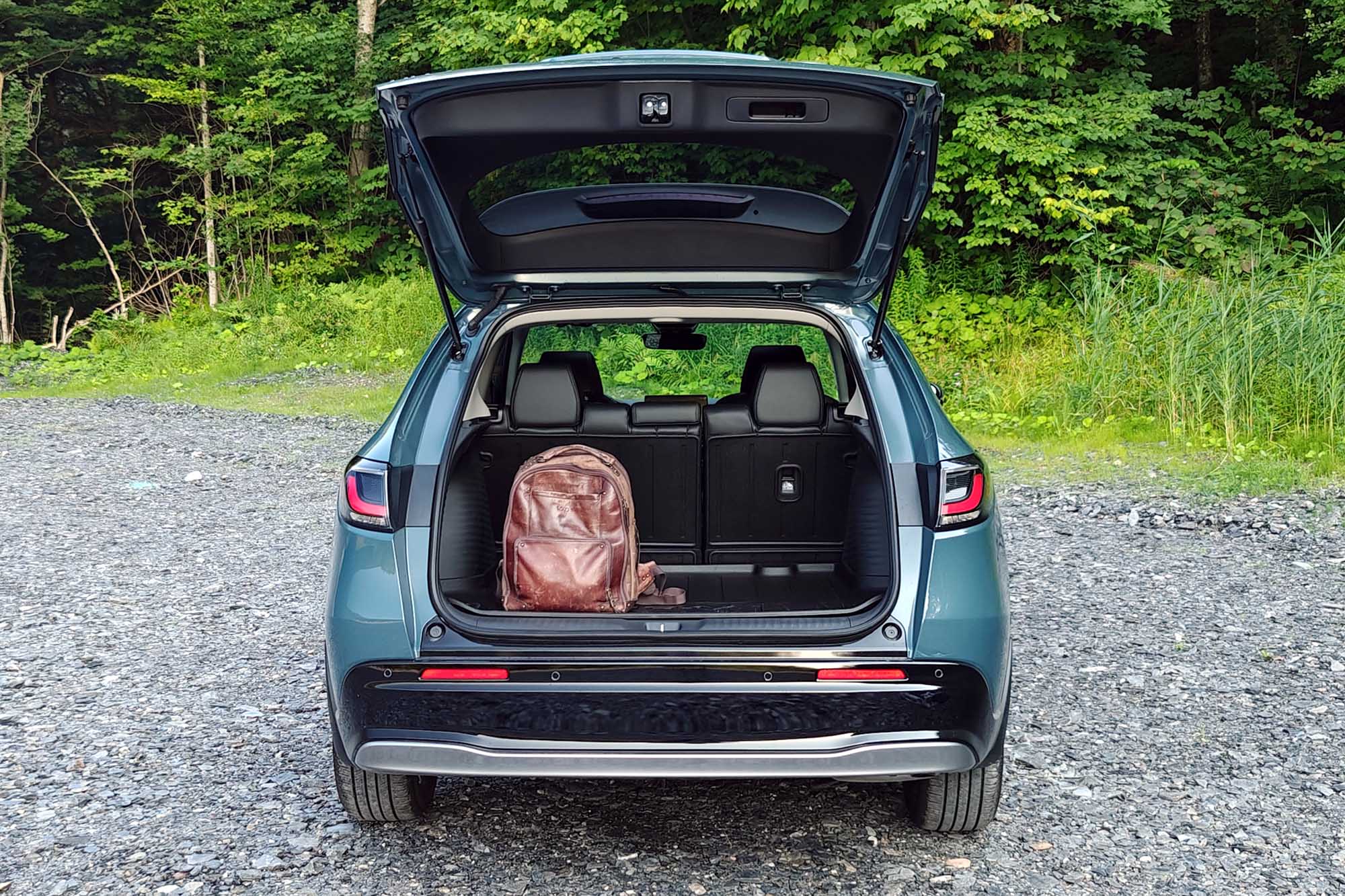 Benjamin Hunting
Benjamin Hunting
Is the 2026 Honda HR-V a Good SUV?
The 2026 HR-V is a bit basic, but it's also spacious, conservatively styled, and relatively affordable. Those three positives may not be enough to overcome its pokey acceleration and frustratingly coarse engine and transmission. Competitors like the Ford Bronco Sport, Nissan Kicks, and Subaru Crosstrek are better to drive and just as useful, in my experience. And if you don't need AWD, then the Chevrolet Trax is worthy of your attention, too.
Written by humans.
Edited by humans.
 Benjamin Hunting
Benjamin HuntingNearly two decades into his career as an automotive journalist, Benjamin has had his hands greasy, his hair blown back, and his heart broken by more than one project car. In addition to his work at Capital One, he has contributed features and reviews to Motor Trend, Car and Driver, Hagerty, Driving Line, Inside Hook, Super Street, European Car, Roadkill Magazine, Motor 1, The Drive, the Toronto Star, the National Post, Business Insider, NAPA, Autoblog, Automotive News Canada, and AutoGuide. He is also cohost of the Unnamed Automotive Podcast and cocreator of the Code 45 and Dead Air graphic novels. In his spare time, he's a friend to vinyl and enjoys keeping the shiny side up during track days.
Related articles
View more related articles